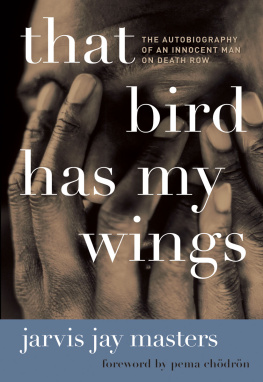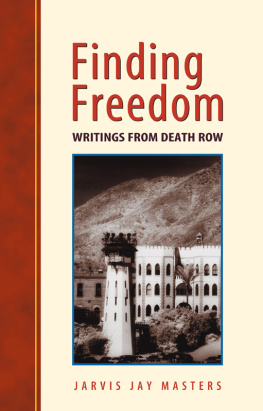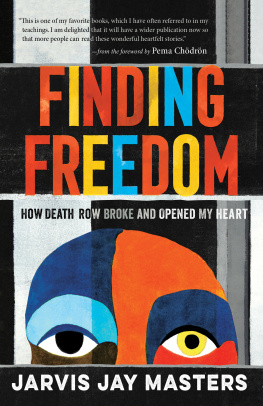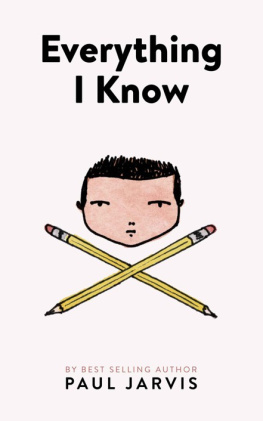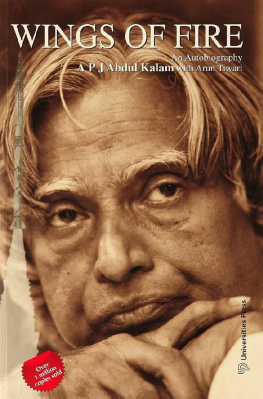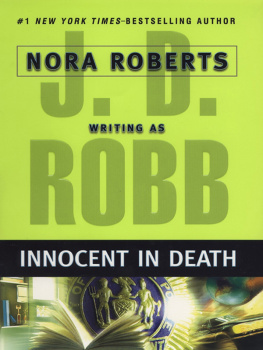Pema Chdrn
A LL B UDDHISTS TAKE A VOW not to cause harm, and some go further. They vow to do anything in their power to alleviate sufferingthe suffering of everyonewithout giving in to biases of like and dislike, worthy and unworthy.
My dear friend Jarvis Masters has taken both these vows while on death row in San Quentin Prison. He took these vows from his Tibetan Buddhist teacher, Chagdud Tulku Rinpoche. In my thirty-five years as a Buddhist, I have rarely met anyone who took these vows as wholeheartedly as Jarvis. Yet this dedicated man, this loving and compassionate man, didnt acquire his immense empathy and courage without undergoing great suffering himself and causing great pain to others as well.
When I first read this story of his early life, it was sometimes so painful that I had to stop and take a break. I kept wanting things to go differently for this promising young boy, but the blunt truth is that things didnt go differently. The story Jarvis so compellingly tells actually happened, and its still happening to countless other poor and traumatized children.
Jarvis told me repeatedly that he felt he had to look closely at his formative years for his own sake and for the sake of all the other children like him who would recognize themselves in his words. He hoped that by telling his story he might help them to avoid making the mistakes that had brought him to San Quentin. He knows there are millions of children just like him who are intelligent, kindhearted, and full of potential, and who can meet that potential if only they have support from their struggling families, decent schools, safer neighborhoods, and mentors to guide them. He longs to be such a mentor.
Even without this book, Jarvis is already a role model for many children. He gets so many letters from adolescent boys who are going through what he went through in one way or another that even in prison its difficult for him to find time to answer them all. Some of these young people are in juvenile lockups, and some of them are the children of prison guards who see their fathers bringing the violence of prison home with them. Yet true to his vows, Jarvis tries to say something to each of them that will make a difference in their lives.
Once when I was visiting him at San Quentin, Jarvis told me that something was troubling him. He knew that his personal story, with all its confusion, violence, and pain, is all too common. As he put it, Whether you ask a prison guard, an inmate, or a person on the street, theyll all agree that such a life is that of a man who is likely to end up just where I have, on death row, waiting to be killed by lethal injection. So how, he asked me, will anyone believe Im innocent?
It seems, in fact, that his innocence is a miraclea very fortunate miracle. At the age of nineteen, when Jarvis was rightly sent to San Quentin for a series of robberies, he was angry, defensive, and mean. His childhood, as you will read in these pages, had trained him to violence and abuse. So it was by luck that he never killed anyone and that, auspiciously for him, he never would.
But it was only partly by luck. This book also tells the story of a child who managed to keep alive a small flame of compassion for himself and others, thanks to the essential wholeness of his nature and the acts of kindness he experienced along the way. That Jarviss Dickensian childhood included some people who loved him made an enormous difference. There was in this violent young man an aversiondeeply buried but still presentto killing. As you will read here, as a boy Jarvis threw away a box cutter because there was no way he could ever see himself using it to harm anyone. And as a young man, Jarvis never actually aimed and shot his gun at another human being, even while inexcusably committing armed robberies that terrified many people.
Four years after Jarvis entered prison, a gang conspiracy resulted in the senseless murder of a prison guard. Jarvis easily could have been part of that conspiracy. Yet for some reason he wasnt included in the planning and execution of the crime. Nevertheless, because of testimony that has since been shown to be false, he was convicted of participating in the planning and of sharpening the weapon that was used to stab the guard, and he was sentenced to death.
Jarvis says today that even if he is killed by lethal injection hell die with a clear conscience, knowing that he was not responsible for the death of a good man. As he puts it, I know my own truth, that I am totally innocent of the death of any prison guard.
The irony of this, as Jarvis well knows, is that his life turned around only after his conviction. If he had been released from San Quentin at the end of his original term, it is possible that he might have remained as sullen and rebellious as he was when he came in. The odds are very good that he would have been dead on the streets well before he reached the age of thirty.
Instead, during his murder trial two important things happened. First, Jarvis started wanting to know who he was and where hed gone wrong. And at the same time, a private investigator working on his case taught him how to meditate and gave him tools to look at himself honestly and face his pain.
Since that time, Jarvis has dedicated his life to nonviolence and benefiting others. These have been years of deep contemplation and discovery, years that have transformed him at the core.

